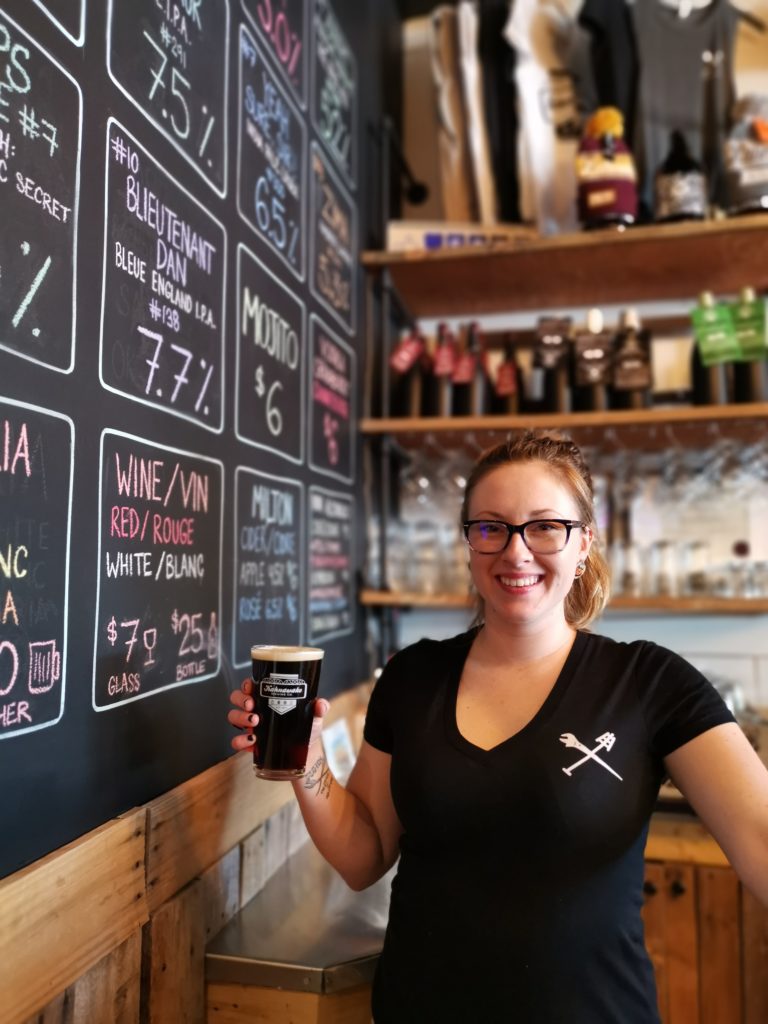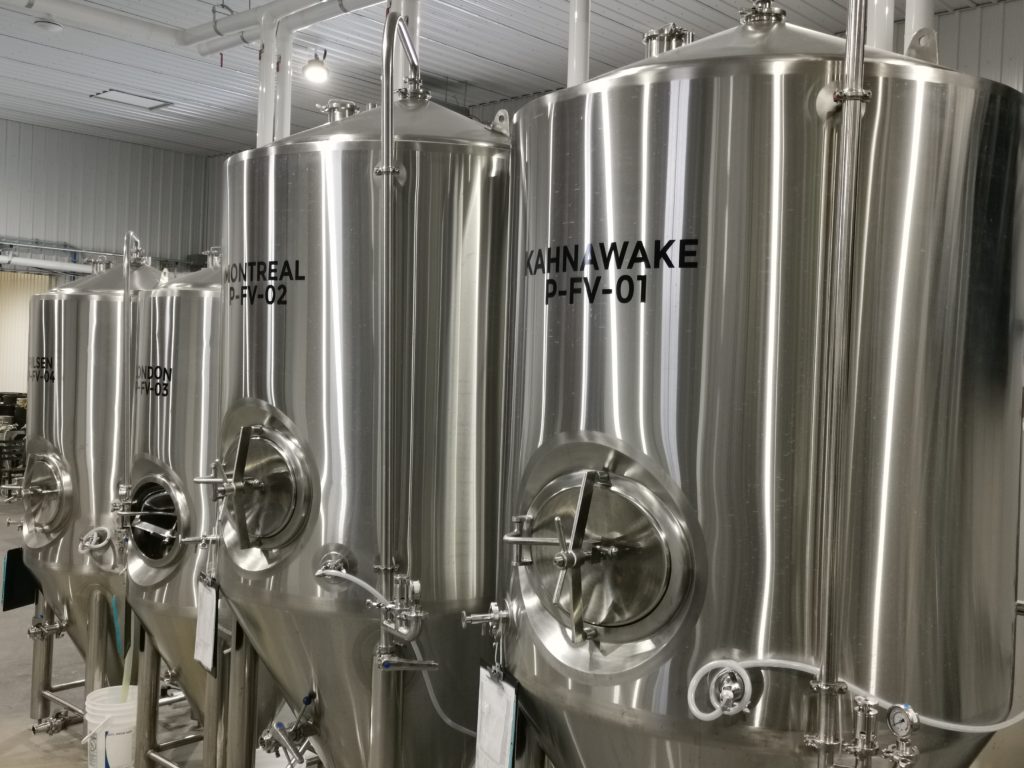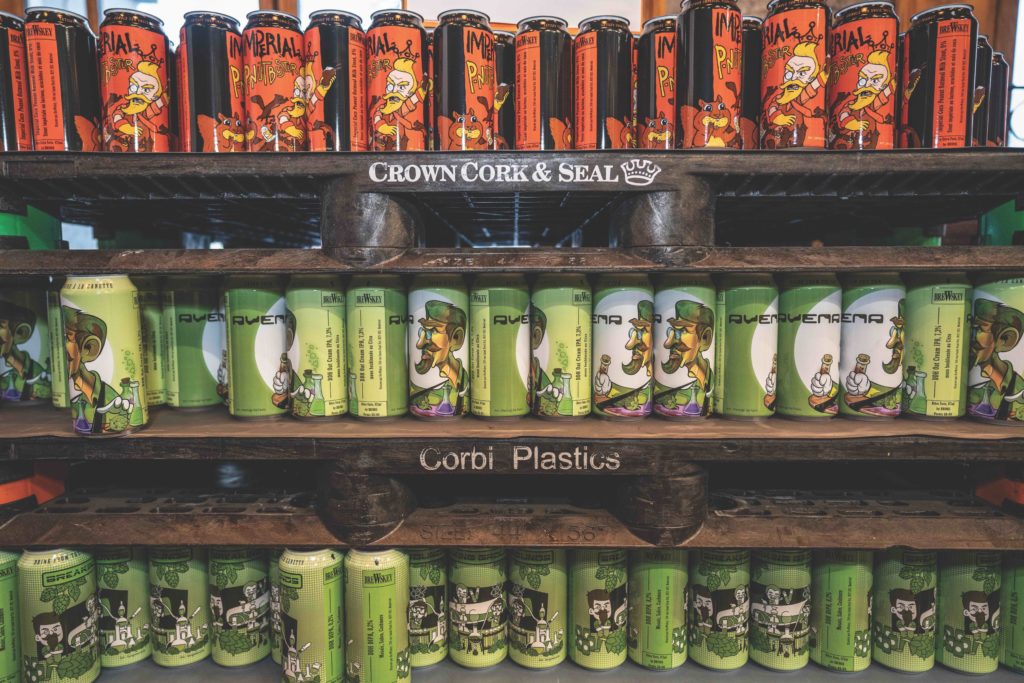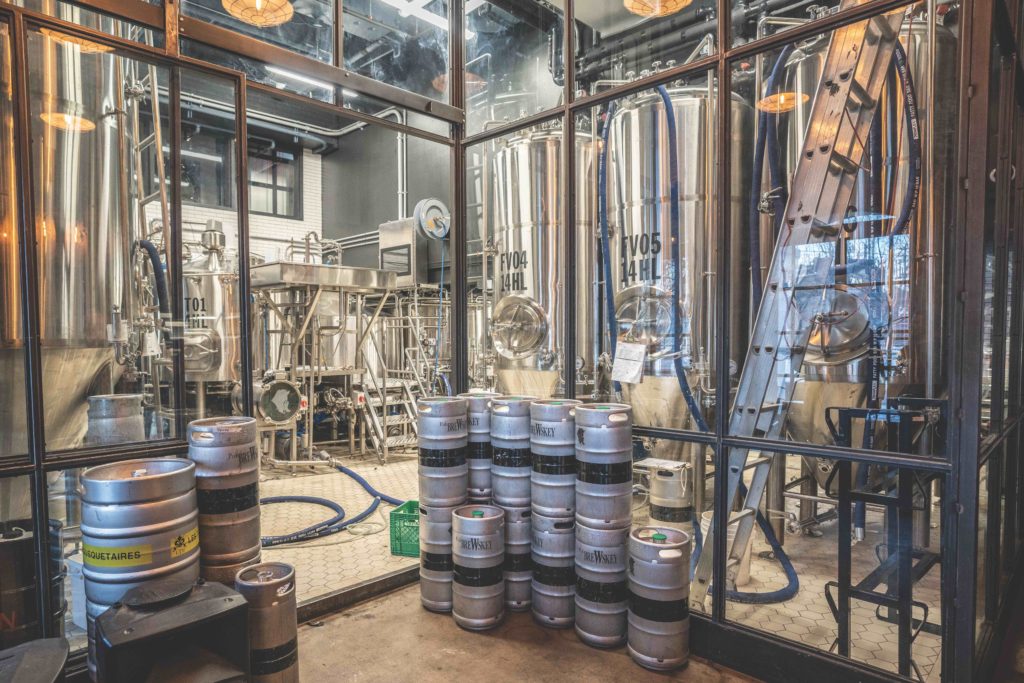Beer is booming in Quebec. There’s more breweries than ever before, sales are up and, more importantly, an increasing diverse number of people are buying beer. And the breweries of the province’s largest city, Montreal, are playing a key role in this period of prosperity.
Co-producer: Johnny Leung | Photos: Jakub Mulik
Move the dial back some seven years and the province of Quebec was the proud home of circa 120 breweries. Fast forward and by 2018, more than 210 businesses were in operation across this part of Eastern Canada. A figure that has only increased in the months and years since.
And according to the latest research from Statista, sales of beer across Quebec amounted to approximately 83.5 million Canadian dollars in 2019, an increase from around 76.5 million dollars the previous year.
There is something of an insatiable appetite for this beautiful beverage and the role new and existing breweries in around Montreal are playing in bringing consumers into the space cannot be understated.
Some just have a taken a different journey to get there than others, that’s all.
Just ask Drew Stevens who, along with founders Matthew Deer and Fred LeBlanc, decided to start Kahnawake Brewing Co, the first microbrewery on a Native Reservation in Canada. They would swiftly be faced with the question of how to obtain a brewing permit when laws and regulations for such thing did not exist.
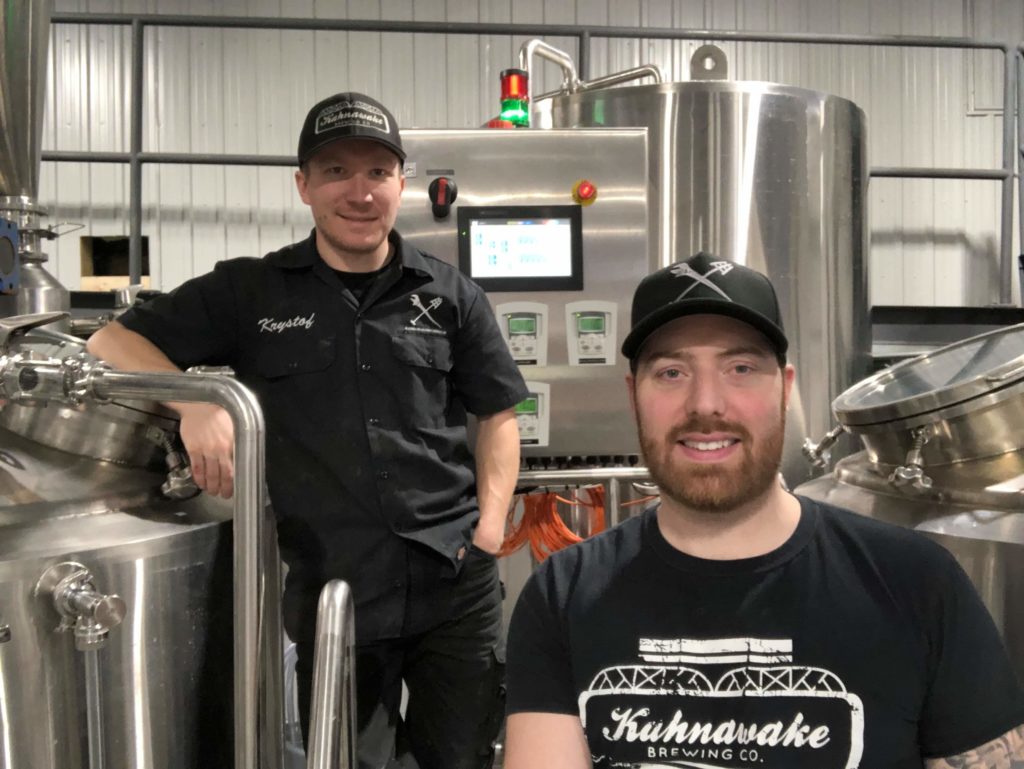
Stevens’ own story in beer started, like many around him, in the field of home brewing. Combining his passions for malt, hops, yeast and water, Stevens also worked in I.T.
However, a decade in that profession failed to fulfil his personal ambitions and he took the decision to return to study, enrolling at Montreal’s McGill University at 845 Sherbrooke St W.
“I knew I wanted to be in beer, I just wasn’t sure how or where,” he recalls.
As fortune would have it, Stevens’ aunt was working on a winery whose owners were interested in expanding into the world of beer. Initial meetings and discussions came and went but it wasn’t until the notion of starting a brewery was mooted by a group of friends in Deer, Stevens and LeBlanc that the idea really got off the ground.
“Everything clicked,” he says. “We started building up this plan in 2016 but with the brewery being on a reserve, it presented us with a number of challenges.”
Stevens adds: “Provincial laws simply didn’t apply to the reserve. We approached the Alcoholic Beverages Control (ABC) Board for a permit but they had nothing that applied in this situation.
“We told them that wanted to make beer, sell beer and have a bar. We put all of our cards on the table and thankfully things went in the right direction.”
In 2016, a provincial law was altered to broaden the capabilities of small beer and wine makers, enabling these small-scale producers to sell their beer at their brewery and directly to grocery permit holders. Fortunately for Stevens and co, the Alcoholic Beverages Control (ABC) Board for Kahnawake decided to follow Quebec’s legislation and the brewery was born.
“We were very grateful. It took a while as lawmaking isn’t something that happens overnight! There were lots of revisions and waiting but 18 months later, everything would fall into place,” he recalls. “Everyone was supportive and the council was eager to help. They knew that people travel for craft beer and the Alcoholic Beverages Control, with its existing regulations for wines and spirits, that beer was missing piece.”
The brewery would officially open on St Patrick’s Day in 2018 and things have gone from strength-to-strength since.
“I looked at those first months as year zero rather than year one. It enabled us to find our feet and welcome people to our brewery,” he recalls. “But things really got going in 2019. We doubled the size of out kitchen, the seating we can offer but importantly, the brewery, too.”
The team migrated from a 2bbl kit, brewing 250l at a time, up to a 7bbl system that gives Kahnawake room to grow into.
“We’re living the brewpub life!” laughs Stevens. “We maintain ten taps at all times and believe that we have something to offer everyone.”
He adds: “We operate a three tier system so you have beers such as a 4.2% Blonde and a 5.0% E.S.B, but then you have a 5.4% Lager or a 7.5% New England IPA. Then at the other end of the scale, there are beers such as a 6.0% Mango Saison or a Coconut Stout.
“Our aim is to create an adventure and showcase the balance of yeast, malt and hops in the various beers we brew. We want beer for all.”
Kahnawake’s brewing expertise has grown considerably with the addition of Krystof Michalsky to the team towards the end of 2018.
“I’d say we are lucky. I predominantly tended to brew US style hop-forward beers but Krystof is Czech and he’s worked with some big macros breweries in Europe and that experience shows. He went from working with some of the biggest breweries in the world to one of the smallest. And with that, he brought his know-how when it comes to producing clean beers.”
It therefore made complete sense that the first beer Stevens and Michalsky would brew together was a Hazy IPA…
“Krystof couldn’t even find the words for it!” he laughs. “It was a big thing for him to wrap his head around and he questioned if this was the type of beer people would want to drink. But things change and we’re now getting known for that style of beer.”
And it’s a combination of this expertise that is boding well for the brewery.

“We’re in a macro beer town so we see the main sales from our Lagers and Blonde beers. That said, the Hazy Pale Ales are right up there, too,” he says. “Hazy styles are very popular, especially with those well versed in beer. But it’s also important to remove yourself from the beer bubble.”
He adds: “It can often be too easy to immerse yourself in the scene but what’s popular with a beer enthusiast might not resonate with a regular visitor to your taproom. It’s important to pay attention to people that just want a regular beer. You should never ignore them.”
With that in mind, Stevens and the team want to ensure that Kahnawake Brewing Co becomes a go-to name for beer in the territory.
“I want to accommodate more people here at the brewery and I would love to see more of our beer in places such as golf courses, too,” he says. “We’ve always done things slow and our way. We are growing gradually, slowly and that’s not going change. We won’t be sitting down for the next few years thats for sure!”
Travel some 10km North-East of Kahnawake Brewing Co along the Lachine Canal and you’ll eventually find Messorem. Located on Pitt and St-Patrick, across the canal from St-Henri, Messorem is a project created by Marc-André Filion, Sébastien Chaput and Vincent Ménard.
Each member of the business has distinct strengths that together can be linked with the creation of a brewing company. It’s a passion that has inhabited them for several years and for the team, Messorem Bracitorium is the bridge to gap their hobby of brewing beer and everyday work with friends.
The group, comprised of Marc-André Fillion, Vincent Ménard, and Sébastien Chaput, met in the early 2000s Montreal underground music scene.
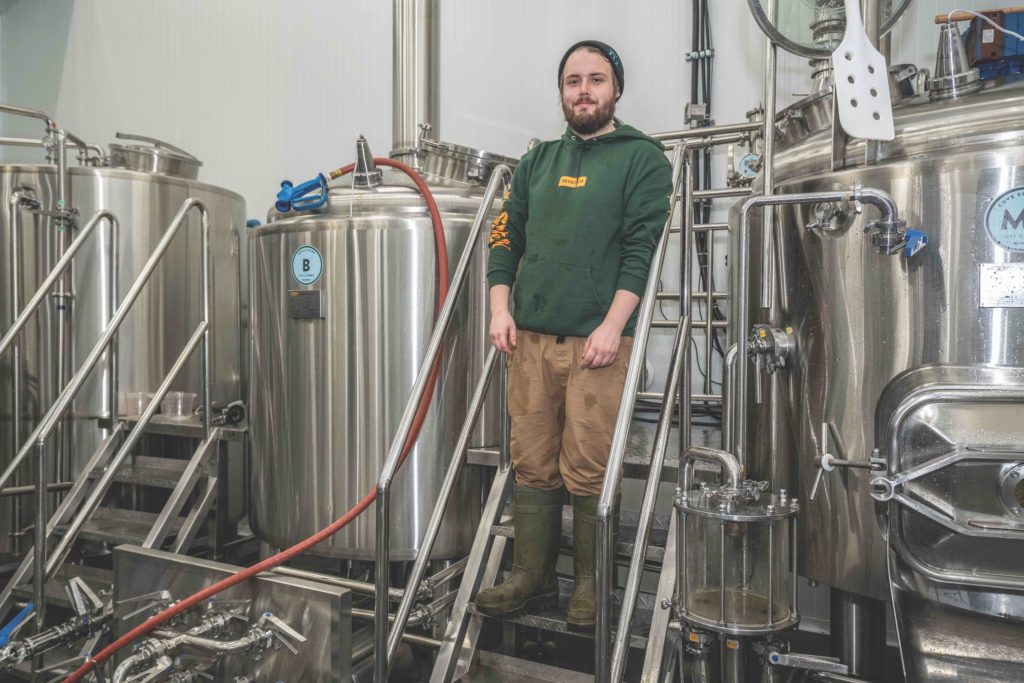
Chaput is a guitarist for the regarded technical metal band, Ion Dissonance. They boast an impressive touring history, with shows played all over the world. Chaput is no longer on the road full time, instead he turned to University studies in business management and finance. He’s the brewery’s numbers wizard and works alongside Ménard who was the drummer for now defunct metal band, The Last Felony.
Brewing beer as an amateur for close to ten years, Ménard enrolled in school to study the brewing craft in depth. He successfully completed his courses and landed a one-month internship at Auval Brewing, and Pit Caribou in Gaspésie, QC. He then went on to become a brewer for Les Trois Mousquetaires for the next two years before heading up the brewing operations at Messorem.
The team is completed by Filion who sang for Orphans in Coma and Here Comes the Hurricane. Latterly rapping with his group, La Carabine, they were nominated for best hip-hop album with ’Chasser ses Démons’’ at l’ADISQ in 2017. Having studied design and marketing before making his way into the beer field, Filion is the designer behind the Messorem brand.
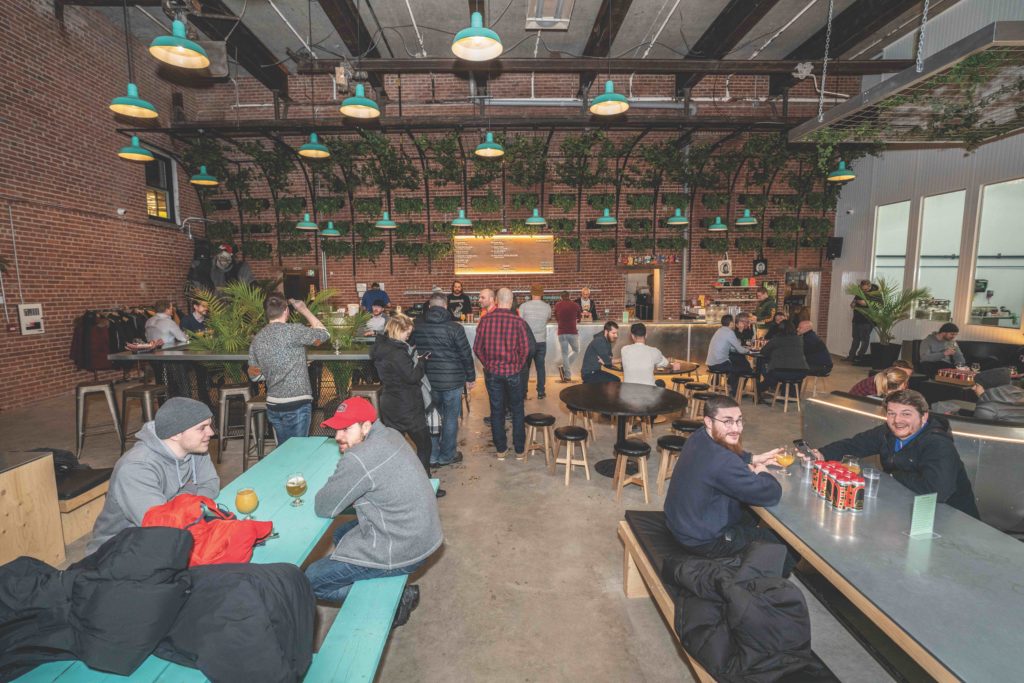
“In 2015, we started meeting every Friday night with friends. We drank the best beers our cellars could hold. We spent our time discussing rare products, even non-existent here in Quebec. Also, those that we can find readily available here at home,” Filion explains. “We wondered what we could do to satisfy our thirst for exceptional products like those of some of our favourites from south of the border such as Other Half, Grimm, and Hudson Valley without having to cross international borders.”
“Filion adds: “When we do so, we are limited to bringing back only small amounts into the country, making great products rare and scarcely available in our beautiful province. For several months, we have been sharing our ideas and working together to create beers that align with these microbreweries. Beers that we personally would like to drink.”
That vision came to fruition in the summer of 2019 when the brewery opened its doors at 2233 Pitt and the team’s inspirations are evident in a hop-forward family of beers that have proved a hit with consumers since day one.
Current offerings include Perdu Pied, a 6.8% DDH IPA featuring Cashmere, Mosaic, Amarillo, Ok Bonne Nuit, a 10% Triple IPA showcasing Citra, Galaxy, and Crush Me If You Can, an 8.2% DDH IPA with Amarillo, Citra, Ekuanot.
And if these beer styles continue to resonate with drinkers as well as they have for aforementioned outfits such as Other Half, then the future for Messorem is very bright indeed.
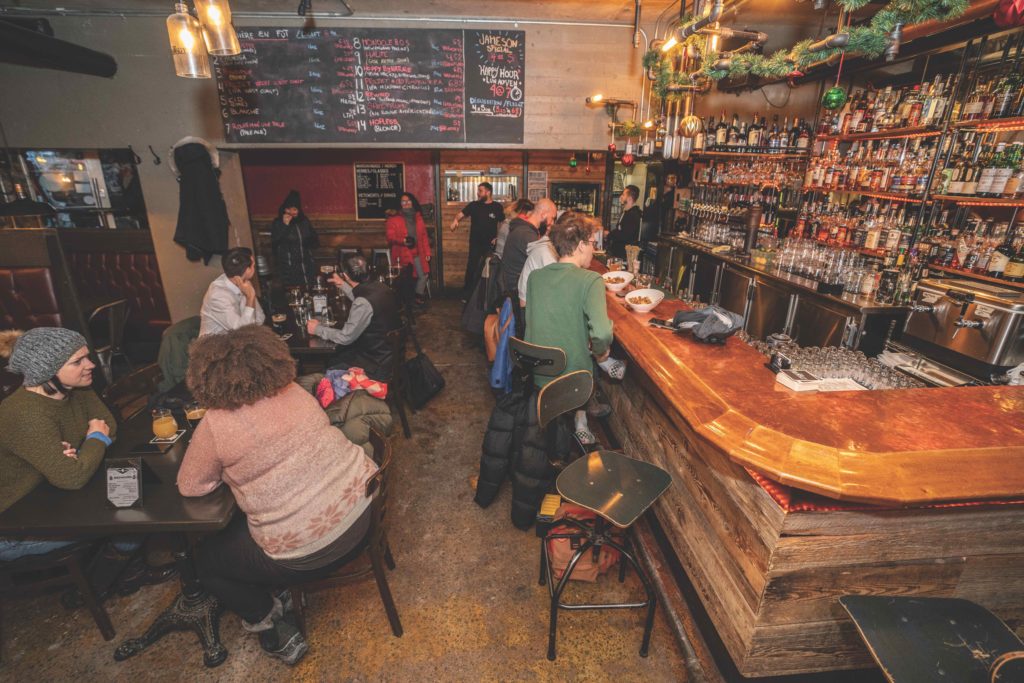
Continue North East towards the Old Port of Montreal and you’ll find Brewskey’s pub and adjacent taproom. Founded by Karine Amyotte, Guillaume Couraud and Derrick Robertson, the idea behind Brewskey was clear. Three friends that collectively had a wealth of expertise in brewing, spirits and hospitality knew they had something to offer the area of Montreal’s Old Port.
“We knew from the very beginning that we wanted to brew our own beer in-house but also accepted that would take time,” explains Couraud. “Opening a pub, we served beer we really enjoyed from breweries in Quebec such as Les Trois Mousquetaires (The Three musketeers). But we also contract brewed our own recipes at partner breweries elsewhere.”
These brews were a hit with drinkers and soon started to develop their own reputation. These included IPAs, Lagers and Red Ales but also numbers such as a Wit featuring flavours of pepper and lemon zest.
It soon became apparent that the ability to brew these beers on-site would be a boon to the business. Fortunately for the team an adjacent building, formerly a museum, would become free. It was just a case of turning it into a taproom. Easy, no?
Well, yes if you’re Couraud and co.
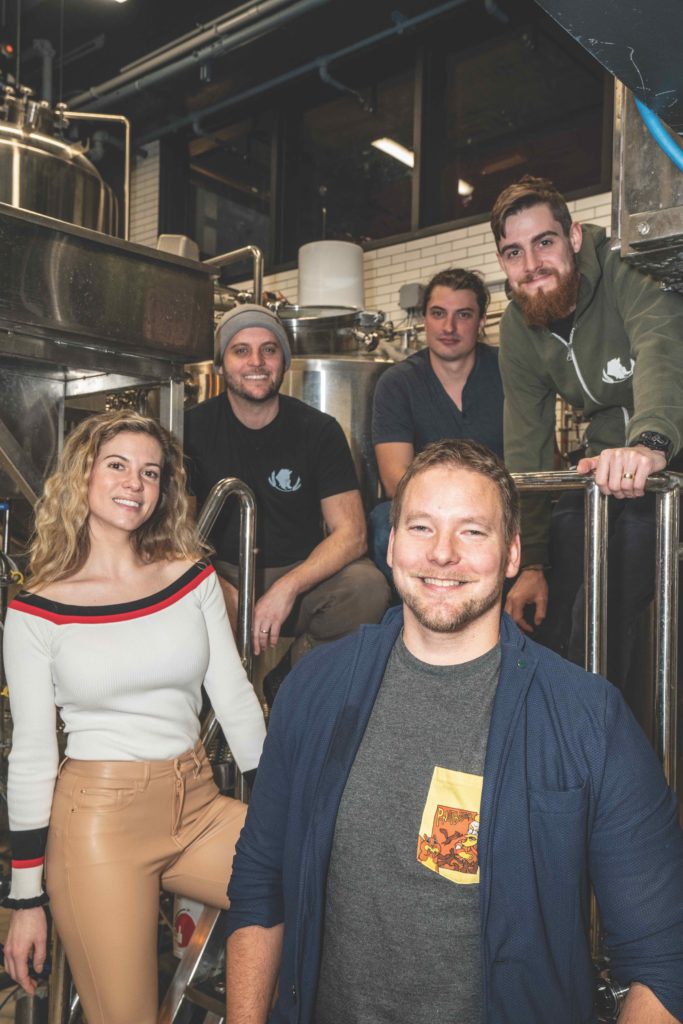
“We opened the pub after 45 days working on it but the taproom took a little longer,” he laughs. “It’s not easy converting a museum into a space to hold a brewery and 160 customers, but we like a challenge.”
But they were up to the task. Robertson specified the brewhouse, a 12bbl system that enables Brewskey to output up to 4000 litres per week.
Couraud’s path would crossed Robertson and Amyotte during his time doing Scotch tastings while working at Old Dublin, a pub and restaurant in Montreal.
“I was a Physics teacher by day and a Whisky teacher by night,” he recalls.
However the toll of finishing at 4am on a regular basis would soon put a stop to his career in field of traditional education.
“It was at Old Dublin I met Derrick and Karine. We got to know each other over many shots and chatted at length about how we could run pubs better than the ones we worked at,” he smiles.
Robertson was a mechanical engineer by trade while Amyotte had the aforementioned experience in the hospitality sector. Their collective skillset has helped make Brewskey a true success, with the opening of the taproom in 2019 proving a hit with locals and tourists alike.
The taproom opened in February of last year with the brewery coming online later in 2019, and they’ve yet to look back.
“I take pride in the role we play in changing people’s minds about beer,” says Couraud. “We’ve helped convert someone wanting a pint of Stella Artois to a beer from Quebec they’ve gone on to really enjoy, and hopefully keep them there.”
He adds: “So going forward, we want to brew more, work on our beers and make them better than ever before. You can always do better. Nobody should ever say otherwise, because they’d be wrong.
“While we might have accomplished a lot in our time so far, it’s only made us hungrier.”
Away from Brewskey, the team at Brasseurs du Monde have only ever done things one way, and that’s their own. It’s good news then that critics and consumers are more than happy with the way they go about the business of brewing.
And it says a lot that a haul of nine awards from across the globe in 2019 was merely considered a “good year” for the Saint-Hyacinthe outfit.
Releases such as Solera, L’Assoiffé-8, L ‘Exploité and Blanche du Mur picked up accolades across the board at prestigious events including the World Beer Awards, Barcelona Beer Festival and Canadian Brewing Awards.
“It’s been a good run for us,” says Alain Thibault, beer sommelier and a key part of the team at Brasseurs du Monde. “There are so many new breweries opening, which makes it harder to stand out, so it’s nice to continue getting recognition for what we do.”
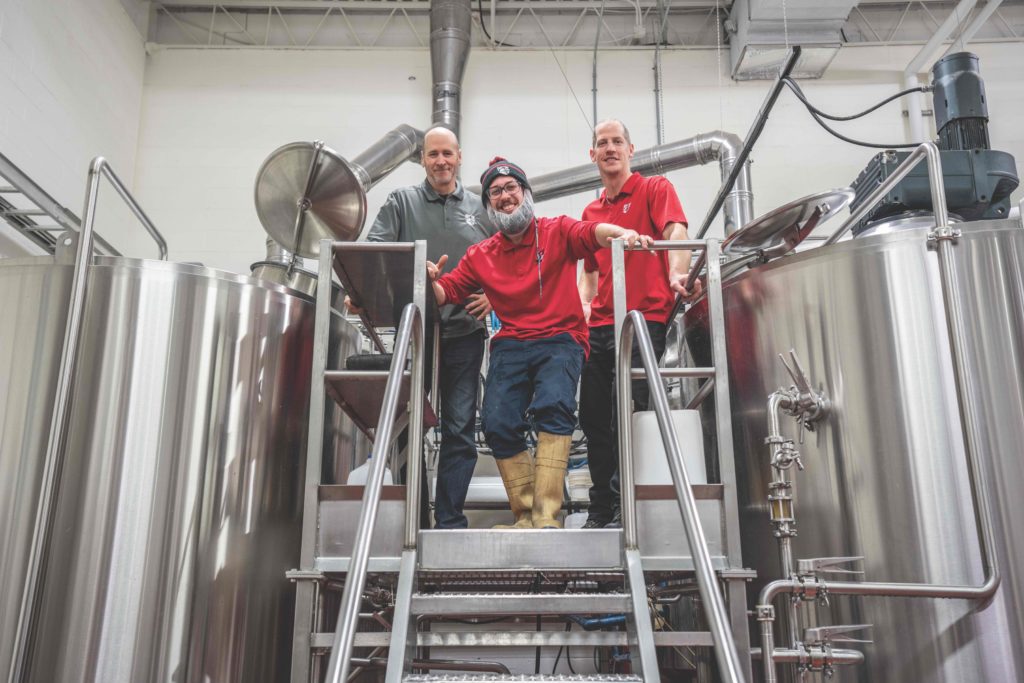
Standing out has rarely been a problem for the brewery. Founded by Gilles Dubé in 2010, the business now employs more than 50 staff, including Dominic Charbonneau the vice president of production and part of Brasseurs du Monde since the beginning.
“Gilles had a great deal of expertise in selling beer and bringing a talented brewer like Dominic on board was a very sensible move,” says Thibault.
That combination has helped the brewery grow to one that sells beer to more than 2200 retailers and nearly 300 restaurants and bars in Quebec.
“I think we’ve done well by never specialising in one particular beer or a certain style,” says Charbonneau. “The customer knows they will always have something new to experience when they drink our beer. Of course, that means each of these beers has to be of the highest quality and they have to be very drinkable. You can’t cut corners and expect people to keep coming back.”
This is easier said than done when you’re producing so many different beers each year and it’s a feat to be admired and impressed by. The brewery boasts some 30 beers in its regular output and more than double that in the family of brews produced seasonally or annually. That’s before we’ve even touched upon the ‘Reserve of the Picoleur’ range, among others.
“Some consumers think we probably have too many beers. But there are others that think that we don’t have enough! You need to fulfil both,” says Charbonneau. “But the proof for us is seeing these new beers sell out in a matter of weeks each and every time.”
Thibault has observed the significant shift of drinkers moving from big beer to modern independent beer. And with that, craft beer stores have one main question: ‘What do you have that’s new?’
“There is an appetite for strong flavours and the new. People aren’t so interested in the ordinary and that’s a challenge we like to take head on,” he explains.
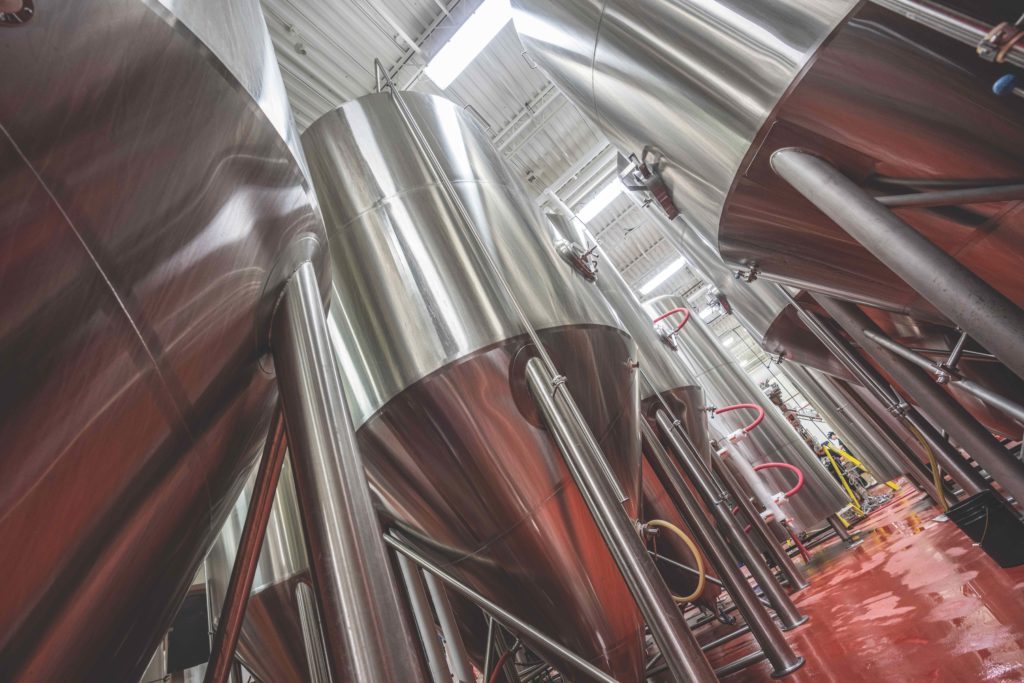
The new product development process at Brasseurs du Monde includes all parts of the business. Marketing and sales will have their input and once a consensus is reached, Charbonneau will explore how to make this beer a reality. Ideas discussed in these meetings have resulted in beers that go on to become popular regular releases for the brewery such as L’Infusée, the marriage of beer and tea. This series has included orange and lime, lemon and chamomile, and blueberry infusions.
“Consumption of those two beverages dates back to antiquity,” says Charbonneau.
Beer produced can range from those tea-infused brews to desert-flavoured stouts, Tripels and right up to the 25% ABV releases that helped make the brewery’s 5th anniversary back in 2016.
Since starting out, Thibault says Brasseurs du Monde has set itself the goal of offering a variety of products that will satisfy the varied tastes of its customers. It’s one of the main reasons it put a great deal of resources into its range of deglutenized beers.
Thibault explains: “During our research, we found that the biggest criticism of beers brewed with naturally gluten-free ingredients (without barley, wheat, oats or rye) is that the resulting beer has a special taste, different from traditional beer. This is why we decided to opt for a deglutenized beer alternative which does not alter the taste of beer and which allows us to offer beers full of flavour.
“Our deglutenization process uses protease-type enzymes which have been specially developed in order to fragment gluten into several of its constituents, namely chains of more or less long amino acids.
“Once the gluten has been broken into pieces, most people with gluten intolerance or allergies will be able to consume the product without experiencing discomfort.
“Imagine that gluten is an image that we cut into pieces to form a puzzle. Once it is undone, it is impossible to glue the pieces together. Some people are allergic only to the whole puzzle, while others will be allergic to a particular room. This is the idea behind the deglutenization process.
“Good beers, without compromise!”
However, regardless of the beer style or ABV of a beer Brasseurs du Monde release, Thibault believes that educating the consumer is all-important when building relationships between brewery and consumer.
“Most beer geeks think they know more than us. That’s fine because they know enough and don’t seek information when it comes to flavour, he says. “But personally, it’s the drinkers migrating to the scene who enthuse us. They are thirsty for knowledge and want to learn more, and we love sharing that with them.”
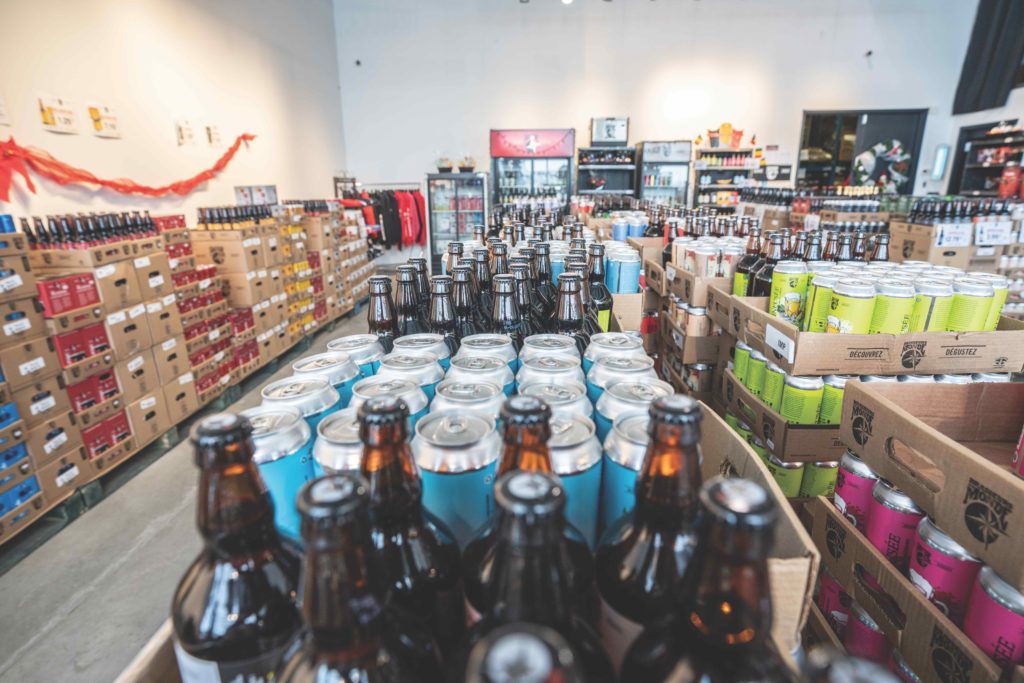
Brasseurs du Monde packages its beers into bottles and, since 2016, cans, too. The investment enabled them to sell their beer to a wider market including festivals and for the consumer that wants to bring a beer to the park or the beach.
“That market is growing each week,” says Charbonneau. “There is a demand for cans but I believe there is very much a place for both. I don’t want to be drinking or selling a 10% Old Ale aged in Scotch barrels from a can. It doesn’t feel right.”
But Charbonneau and the team are not approaching the brewery’s 10 anniversary by accident and know the value of listening to, and working with, the consumer.
“In 2010, people were more likely to enjoy the beer from one brand. They had it, and they stuck to it,” he says. “Now, people are in the market for what’s appealing. They are open to trying new flavours, new styles and new experiences.”
He adds: “That means you always have to be better than you were before to meet those demands. We’re constantly improving and we’ll hopefully be here for another 10 years as a result.”
In Conversation | Émilie Leclerc
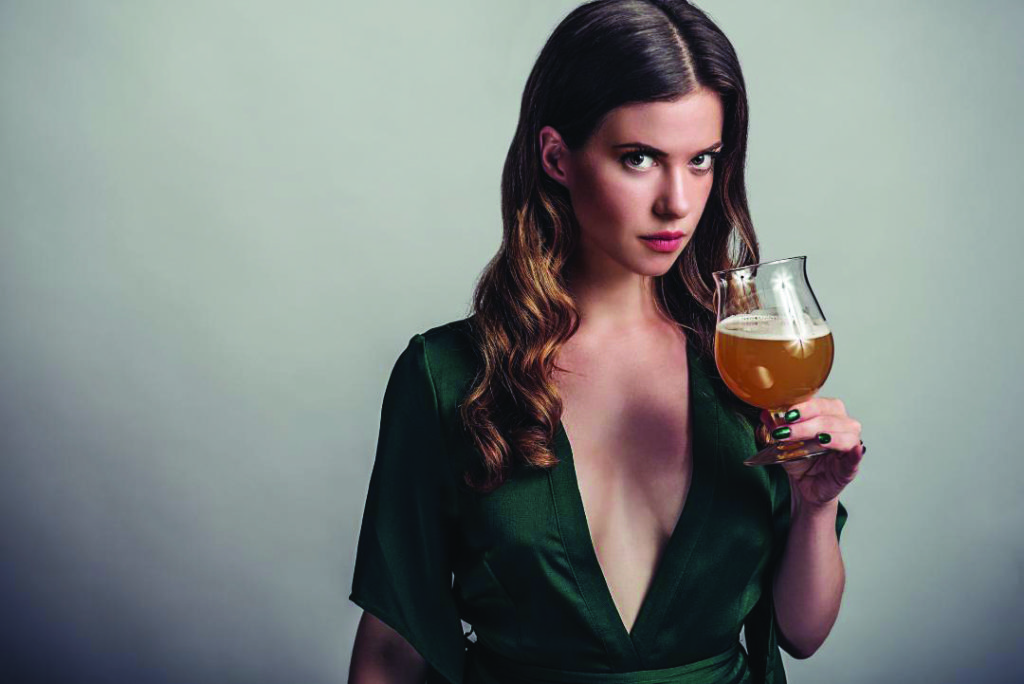
We sat down with Émilie Leclerc also known as @la_petite_biere on Instagram. Here Leclerc, who is an actress, model and performer from Montreal, Quebec, shares her thoughts on what makes the beer scene so special and where it’s going next.
Brewers Journal Canada: Montreal and its surroundings boasts so many great breweries, taprooms and bars to enjoy those beers in. Is it possible to define the Montreal beer scene?
Leclerc: It’s rather difficult to define the Montreal brewing scene in a few sentences. But if I limited myself to three words I would say: Ambitious, curious and passionate. And I would also add: High caliber! We brew damn good beer in Montreal!
Brewers Journal Canada: What sets it apart from other towns and cities in Canada?
Leclerc: Montreal has a unique vibe in the world. And it’s the same with beer. What I like when I suggest Montreal breweries to my subscribers is that I can practically satisfy all desires. We have breweries that are good in all styles and have an eclectic menu. Others specialize in a more specific style of beer, making it an art. Do you just like “haze? Go to Messorem bracitorium! Stout only? Go to Beauregard Brasserie distillery. Barrel aged? Harricana Brewery.
Brewers Journal Canada: In your experience, how has the beer scene changed in recent years. Have you seen any trends in the type of beers Montreal’s breweries are producing or the types of bars that are opening?
Leclerc: The scene has changed enormously. In Quebec, we mostly had classic styles, often the same: blonde, white, red. Now it is difficult to make a choice because there are so many, and every day there are new products, styles, which arrive on store shelves.
And what I notice as “trending” among Montreal brewers, for the last year or two, is a return to the roots. Back to traditional recipes … with a touch of modernity and personal interpretation from the brewer of course!
In terms of the types of bars that are opening increasingly, in recent years in the Montreal brewing landscape, are breweries with a adjacent tasting room. Where often children and dogs are welcome. A formula similar to that of American breweries. Me personally, this is my favourite formula.
Brewers Journal Canada: Looking ahead, where do you see the next developments in Montreal’s beer and brewing sector? Or as importantly, what would you like to see, and collectively, could it be doing anything better?
Leclerc: It would also be good if Quebec breweries could deliver their products directly to individuals, via their website. This would allow breweries away from major centers to have an additional chance to make themselves known to the public.
And of course, I find that there is still some educating to be done at the consumer level. However there are not enough guidelines available necessary to democratize and popularize beer in order to enlighten the consumer on their preferences. And that “The little beer” (Microbrew) will take care of! 😉

